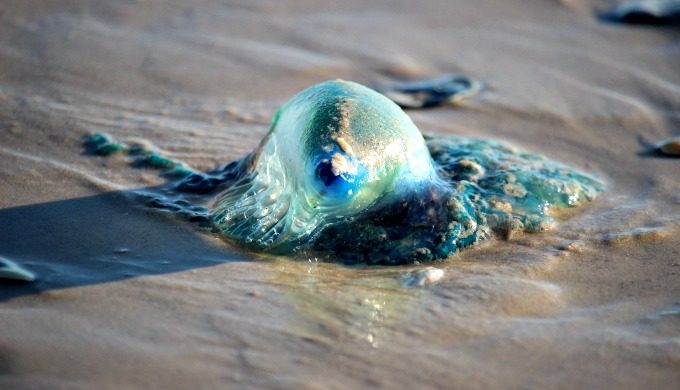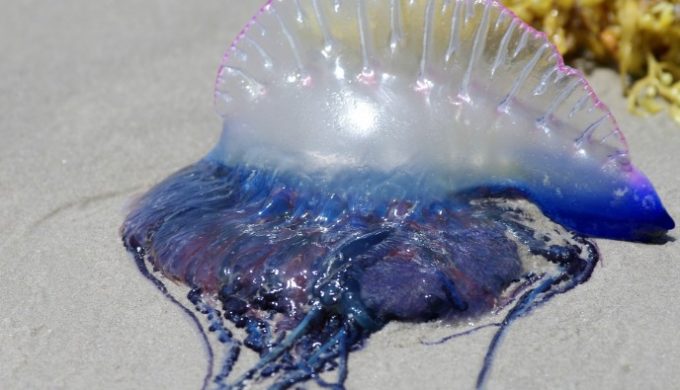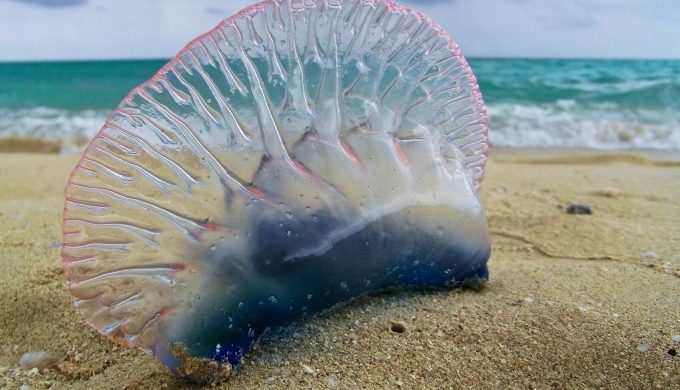According to Cameron County Beach Patrol, more and more people are reporting injuries from the jellyfish-like creatures, known as Portuguese man o’ wars, on South Padre Island. In recent weeks, a few dozen reports have Cameron County Beach Patrol concerned. Beach Patrol has now issued Yellow and Blue flags to warn visitors of venomous marine life.
Nature
Portuguese Man O’ Wars Putting the Sting on South Padre Island
They Go Wherever the Wind Takes Them

Photo: Flickr/Carolyn Savell
“These come in with the wind,” Art Hurtado, chief of the Cameron County Beach Patrol, told KXAN news. “They have their own sails, they are not self-propelled so depending on the time of year, which direction the wind is facing, are where they happen to be in the ocean at the time they might end up here, they might end up at another part of the coast, they might not come in at all.”
Not a Sting You Want to Get

Photo: Flickr/Anna Hesser
Portuguese man o’ wars are not conscious creatures. They are not actively trying to sting you. If you do come across one on water or on land, don’t panic. Hurtado describes the sting as a large bee sting, but he says some compare it to getting burned by fire. Injuries are not fatal.
Hurtado recommends, that you “treat it with some vinegar first and then scrape the tentacles off your skin. Just scrape it off with a card or an ID. You don’t want to irritate it; you don’t want to rub where you were stung–you just want to take the tentacles off the area.”
Often Mistaken for Jellyfish

Photo: Flickr/Francis Mariani
The Portuguese man o’ war, (Physalia physalis) is often called a jellyfish but is actually a species of siphonophore, a group of animals that are closely related to jellyfish. A siphonophore is unusual in that it is comprised of a colony of specialized, genetically identical individuals called zooids — clones — with various forms and functions, all working together as one. Each of the four specialized parts of a man o’ war is responsible for a specific task, such as floating, capturing prey, feeding, and reproduction. Found mostly in tropical and subtropical seas, man o’ wars are propelled by winds and ocean currents alone, and sometimes float in legions of 1,000 or more!
Resembling an 18th-century Portuguese warship under full sail, the man o’ war is recognized by its balloon-like float, which may be blue, violet, or pink and rises up to six inches above the waterline. Lurking below the float are long strands of tentacles and polyps that grow to an average of 30 feet and may extend by as much as 100 feet. The tentacles contain stinging nematocysts, microscopic capsules loaded with coiled, barbed tubes that deliver venom capable of paralyzing and killing small fish and crustaceans. While the man o’ war’s sting is rarely deadly to people, it packs a painful punch and causes welts on exposed skin.



